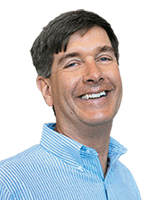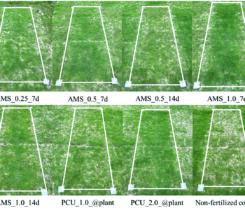Clark Talks Turf: Nitrogen mineralization
 Kevin Frank, Ph.D., is a turfgrass scientist at Michigan State University. He conducts research on soil fertility, turf nutrition and soil physical and chemical processes in addition to publishing and speaking on these topics. You may reach Frank at frankk@msu.edu for more information.
Kevin Frank, Ph.D., is a turfgrass scientist at Michigan State University. He conducts research on soil fertility, turf nutrition and soil physical and chemical processes in addition to publishing and speaking on these topics. You may reach Frank at frankk@msu.edu for more information.
Q: Briefly describe the process of nitrogen mineralization.
Mineralization, along with immobilization, are soil biological processes that give and take nitrogen, so mineralization of organic matter by microorganisms gives nitrogen/makes it available for turf uptake, whereas immobilization takes or ties up nitrogen in soil microorganisms. More technically, mineralization is the process of converting organic forms of nitrogen to inorganic forms of nitrogen via microbial activity.
Q: What conditions favor mineralization and what conditions slow mineralization?
Conditions that favor microbial activity are going to favor mineralization; temperature probably is the most important factor. Cool temperatures in the early spring and late fall (especially in the North) slow mineralization, while it is at a peak during the warm summer, assuming adequate soil moisture.
Q: Can the amount of nitrogen made available to turf via mineralization be tested or predicted?
I don’t believe there are tests commonly used to estimate nitrogen mineralization potential in turf systems. The Illinois Soil Nitrogen (N)Test (ISNT) developed by Richard Mulvaney, Ph.D., at the University of Illinois, is a chemical test to estimate mineralization potential to guide N fertilization. It quantifies soil amino-sugar N fractions (these are the main N components of microbial cell walls). Dave Gardner, Ph.D., at The Ohio State University did some research on this, but from my recollection it seemed that results were inconclusive as to the test’s ability to predict turf response based on an ISNT value.
Q: What is the practical significance to superintendents of nitrogen mineralization?
Mineralization from organic fractions in soil always are occurring and contributing some N to the N cycle that is available for turf uptake. It could be considered as Mother Nature’s base of a superintendent’s fertilizer program. All the practices superintendents undertake to produce the healthiest growing environment and soil for turfgrass maintains the N cycle and within it, mineralization. Returning clippings adds organic matter to soil that can be mineralized, so it stands to reason more N would be made available to turf through mineralization on sites where clippings are returned.
Q: What adjustments to nitrogen fertility programs should superintendents consider to account for nitrogen from mineralization?
I don’t know that you can really account or count on it, but I think this is part of the art of being a golf course superintendent, to be an observer and not be afraid to adjust your fertilizer program as the season progresses. Superintendents aren’t chasing yield. If it looks lean, go fertilize, if it’s growing like mad, hold off or reduce the amount of nitrogen you apply. Quick example: We had a cold April in Michigan — grass wasn’t growing, I doubt there was much mineralization going on. May came and it was one of the warmest and wettest ever, and now the grass is growing like crazy. This is part of the normal spring push growth cycle of cool-season grasses in the North, but I also think those hot May temperatures resulted in more N mineralization than normal, something you can’t control but can recognize and do your best to adjust to.
Q: Is there anything else you would like to add?
My putting is really sketchy right now, I’m not sure what’s going on… how’s the fishing?
Editor’s note: This column was written in early June. When you read this column in July, we hope Kevin’s putting has come around and Clark is out fishing.












